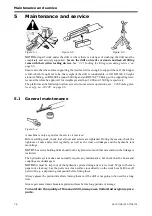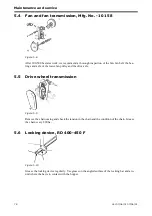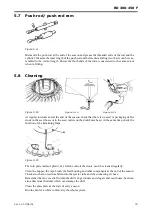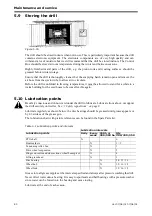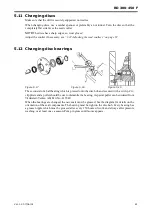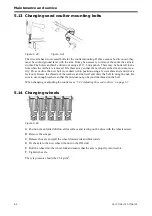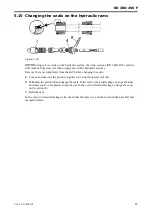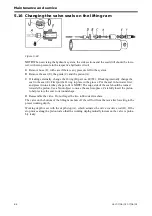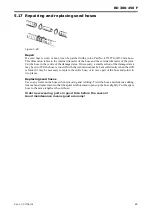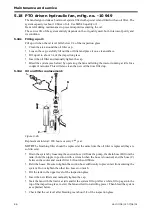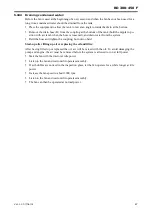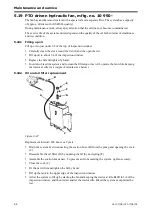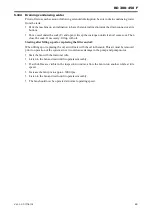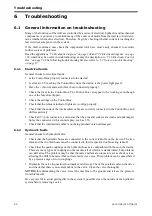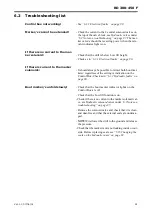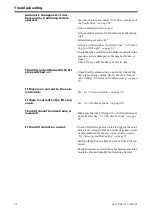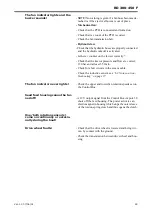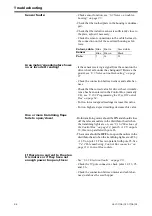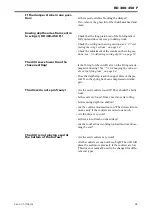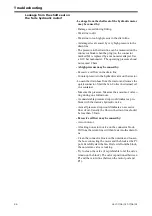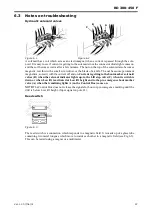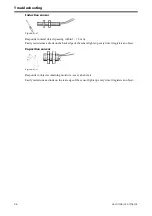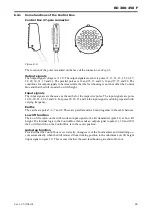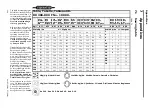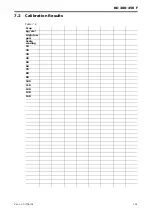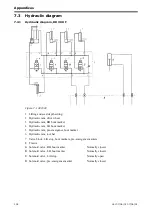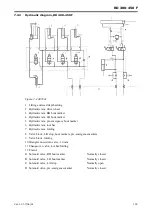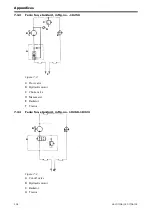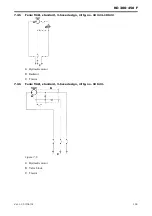
Troubleshooting
90
Ver.07/06/01 07/06/01
6
Troubleshooting
6.1
General information on troubleshooting
Many of the functions of the drill are controlled by a series of electrical, hydraulic and mechanical
components. A good way to exclude many of the sources of faults from the start is to first deter-
mine whether the fault is electrical. Therefore, begin by checking whether current is reaching the
last electrical component in the system.
If the fault continues, now check the components which are most easily checked, to exclude
further sources of problems.
Read the appendices ”7.3 Hydraulic diagram” on page 102 and ”7.4 Electrical diagram” on page
108, which may be useful in troubleshooting, as may the description in ”3.16 Electronic Control
Box” on page 51. The following troubleshooting list also refers to ”6.3 Notes on troubleshooting”
on page 97.
6.1.1
Electrical faults
General checks for electrical faults:
!
Is the Control Box properly connected to the tractor?
!
Is at least 12 V reaching the Control Box from the tractor, is the power light green?
!
Have the + (brown) and earth (blue) been connected properly?
!
Check the fuses in the Control Box. The Control Box can appear to be working even though
one of the fuses has tripped.
!
Check the settings on the Control Box
!
Check that the relevant indicator lights are working properly.
!
Check that the ends of the intermediate cable are correctly connected to the Control Box and
drill respectively.
!
Check all 37-pole connectors, and ensure that the pins and sockets are clean and undamaged.
Spray the connector with a contact spray, such as 5.56.
!
Check that the intermediate cable is not being pinched or is not damaged.
6.1.2
Hydraulic faults
General checks for hydraulic faults:
!
Check that the hydraulic hoses are connected to the correct takeoffs on the tractor. The two
thick and the two thin hoses must be connected to their respective double-acting takeoff.
!
Check that the quick couplings on the hydraulic hoses are compatible with those on the tractor.
There are many types of couplings on the market, all of which are standardized, but problems
can still arise. The problem may be that the male and female connectors act as check valves,
allowing the drill to be raised but not lowered or vice versa. This problem can be exacerbated
by a pressure surge or worn couplings.
!
Dismantle the valve in question (bout marker or lift stop). Check the external seals on the valve
and check that there is no sealant debris in the valve. Clean the valve thoroughly.
NOTE!
Before dismantling the valve, lower the machine to the ground and release the pressure
from this takeoff.
Be very careful to avoid getting dirt in the system, if possible clean the outside of the hydraulic
system before removing a valve.
Summary of Contents for RAPID RD F Series
Page 1: ...Ver 1 3 07 06 01 900107 en Instructions Seed drill RAPID series RD 300 450 F No 10 026 11 999...
Page 2: ...2 Ver 1 3 07 06 01...
Page 6: ...6 Ver 1 3 07 06 01...
Page 16: ...Assembly instructions 16 Ver 07 06 01 07 06 01...
Page 23: ...RD 300 450 F Ver 1 3 07 06 01 23...
Page 41: ...RD 300 450 F Ver 1 3 07 06 01 41...
Page 47: ...RD 300 450 F Ver 1 3 07 06 01 47...
Page 108: ...Appendices 108 Ver 07 06 01 07 06 01 7 4 Electrical diagram Figure 7 8 307335...

